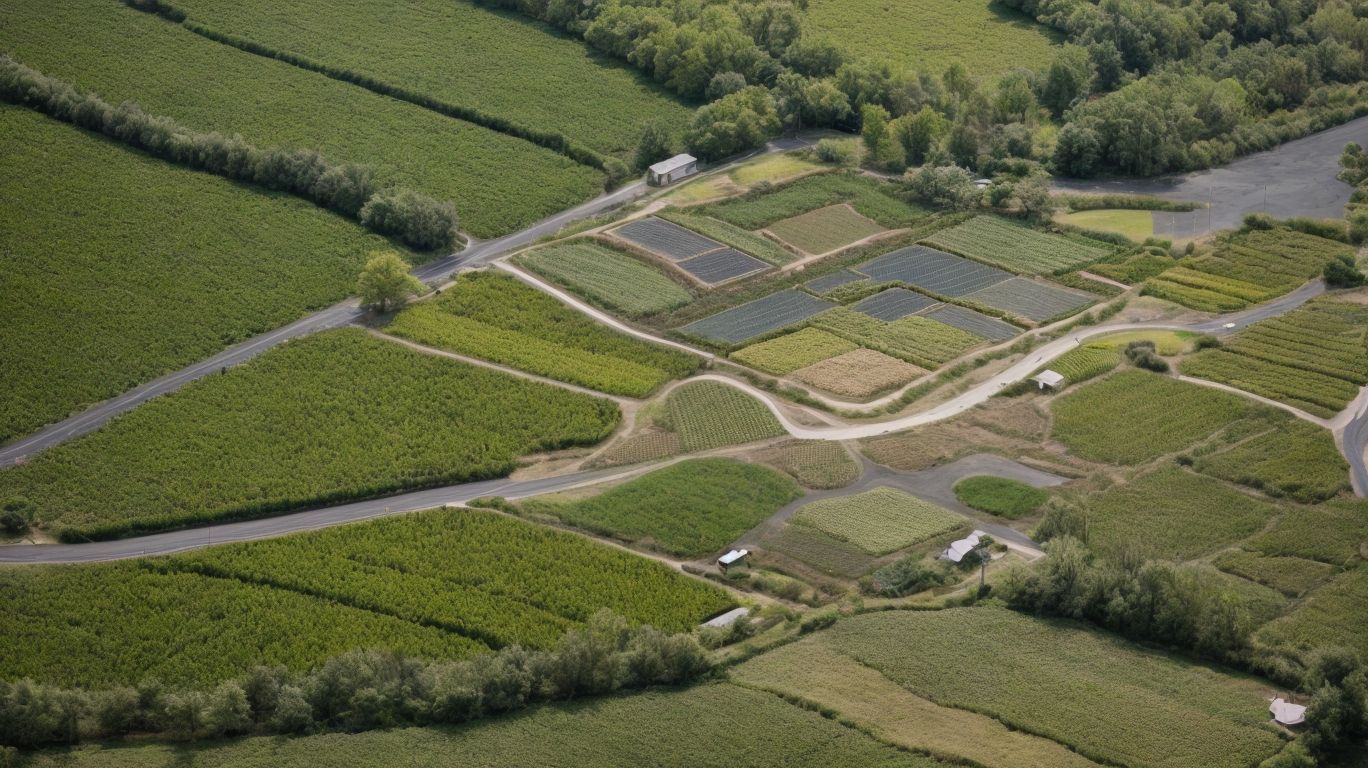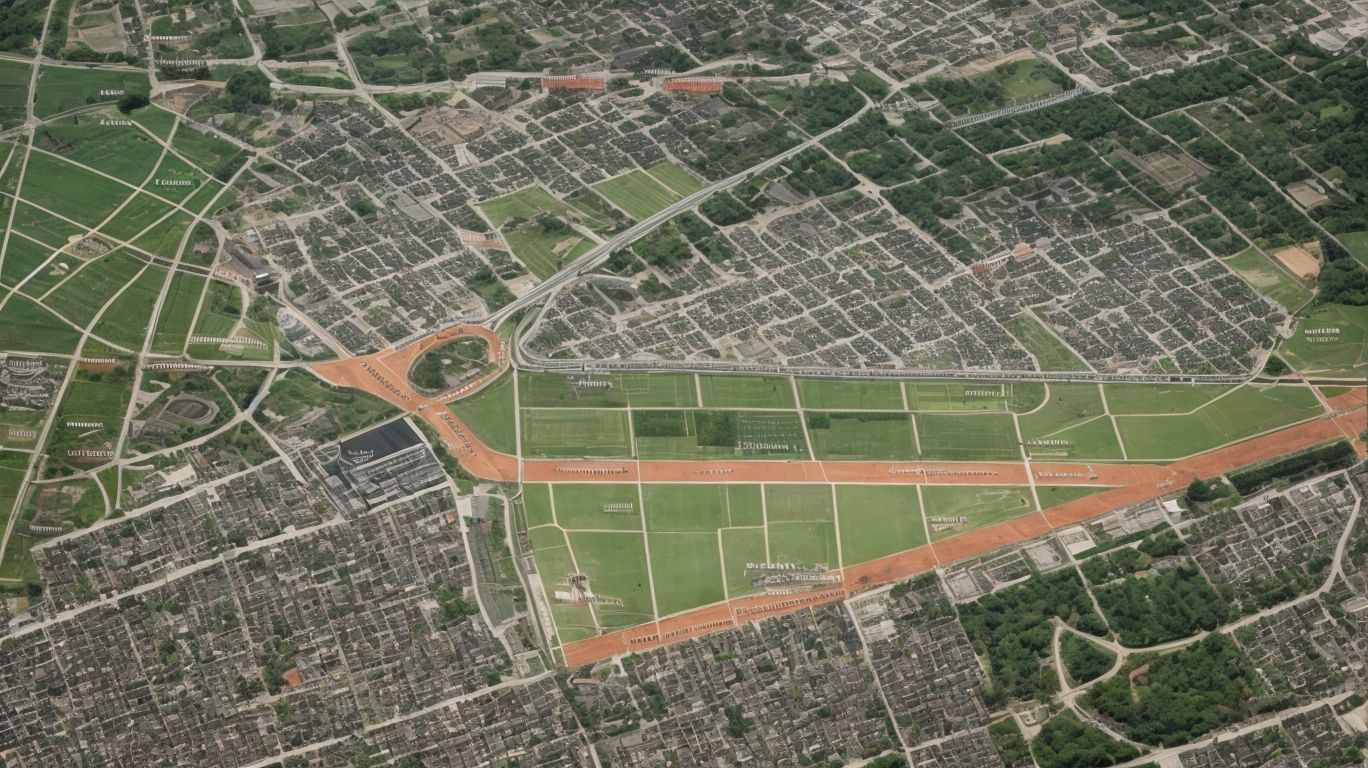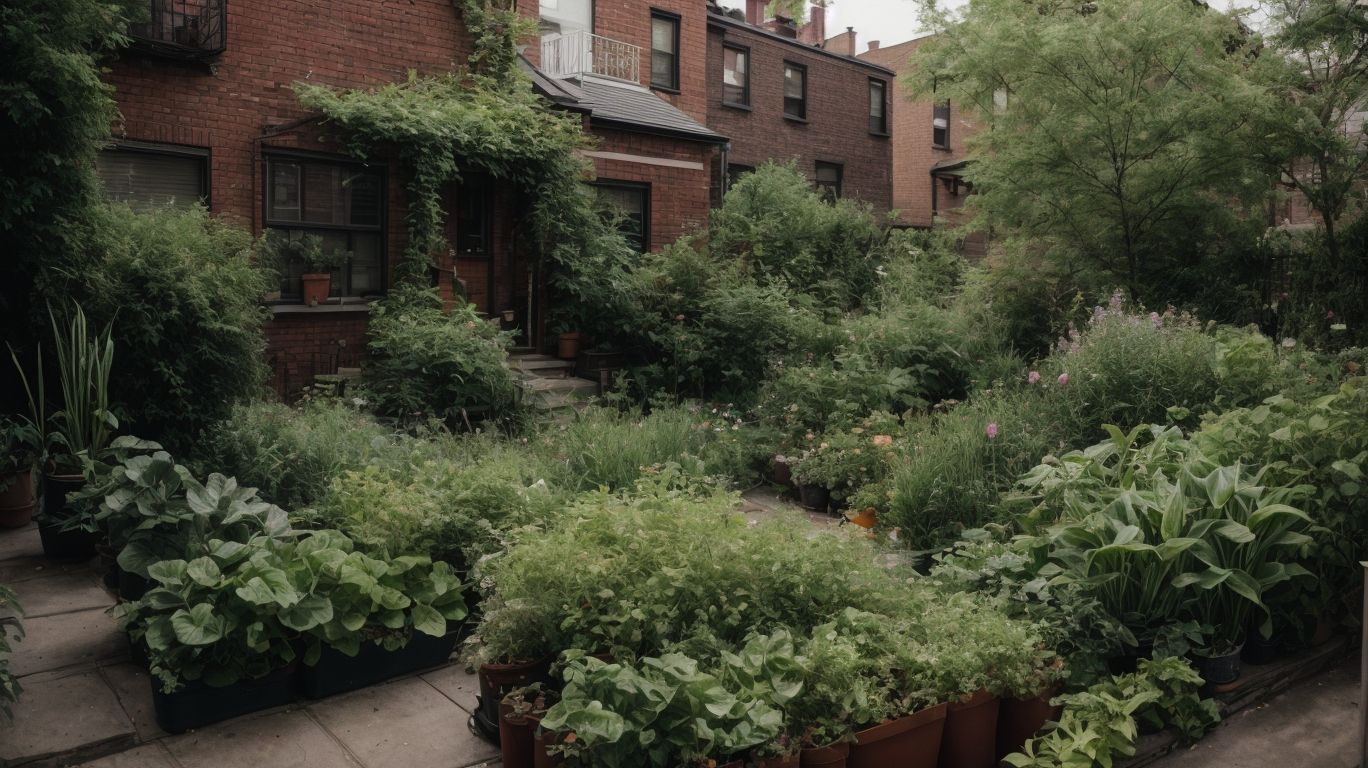In the world of gardening, the concept of gardening zones plays a pivotal role in determining the suitability of plants and gardening practices for a specific area. Understanding your gardening zone can be the key to creating a thriving and successful garden. In this comprehensive guide, we will delve into the significance of gardening zones, how they are determined, and specifically, explore the gardening zone for 47960. We will uncover the average temperatures in this zone, the types of plants that flourish within it, and the best gardening practices to ensure a bountiful and beautiful garden. So, whether you are a seasoned gardener or just starting out, this article will provide you with valuable insights to enhance your gardening endeavors in zone 47960.
Key Takeaways:
What Is a Gardening Zone?
A gardening zone, as defined by the United States Department of Agriculture (USDA), indicates the specific climate conditions and temperatures that dictate which plants can thrive in a particular geographic region.
The USDA’s Plant Hardiness Zone map is a valuable tool for gardeners and growers, providing a comprehensive guide to the average annual minimum winter temperatures across the United States. By dividing the country into distinct zones based on temperature ranges, the map assists individuals in selecting plants that are most likely to flourish in their specific area.
Why Are Gardening Zones Important?

Credits: Monkinthegarden.Com – John Hall
Gardening zones are crucial for understanding the climatic conditions, average temperatures, and weather patterns specific to different regions, enabling gardeners and growers to make informed decisions about plant selection and cultivation practices.
In the United States, the USDA Plant Hardiness Zone map is a vital tool that categorizes geographic areas based on their average annual minimum winter temperature. This data is collected from various weather stations and represents the 30-year average to provide a reliable reference for gardeners. For instance, regions like Washington D.C., Indiana, and other areas display distinctive temperature variations and climatic factors, reflecting the importance of understanding gardening zones for successful plant growth and thriving cultivation.
How Are Gardening Zones Determined?

Credits: Monkinthegarden.Com – Andrew Thomas
Gardening zones are determined based on comprehensive factors such as climate characteristics, drought patterns, Koppen-Geiger Climate Zone classifications, Ecoregion distinctions, and annual climate data analysis, all contributing to the accurate delineation of specific zones for plant cultivation.
The USDA, for instance, utilizes climate data collected over decades, including factors like average minimum temperatures, to create the USDA Hardiness Zone Map, aiding gardeners in selecting plants suitable for their regions. The consideration of drought conditions is essential for determining optimal plant adaptation in specific zones.
The Koppen-Geiger Climate Zone system, with its diverse classifications based on temperature, precipitation, and seasonal variations, offers a global perspective on climatic variations affecting plant life.
Hardiness Zones
The USDA Hardiness Zones represent the 30-year average annual minimum winter temperatures, providing critical insights into the cold hardiness of plants and their suitability for various locations across the United States.
The USDA Plant Hardiness Zone map is crucial for gardeners and horticulturists as it delineates the regions based on their average annual extreme minimum temperatures. Understanding these zones is essential for selecting and cultivating plants suited to specific climatic conditions.
For example, plants classified for Zone 4, where the temperatures drop to -30 to -20 degrees Fahrenheit, might not thrive in Zone 8, where minimum temperatures range between 10 to 20 degrees Fahrenheit. As a result, the Hardiness Zones aid gardeners in determining which plants are likely to survive and thrive based on their cold tolerance, and thus guide their choices for successful cultivation. It plays a vital role in agricultural planning and helps in the conservation and preservation of plant species.
Heat Zones
Heat Zones, as designated by the USDA, delineate regions based on the average number of days with temperatures exceeding specific thresholds, providing valuable guidance for growers and gardeners across American territories.
These zones are determined by the average annual number of days with temperatures over 86°F, also known as the number of “heat days.” They are further divided into distinct categories, such as Very Hot, Hot, Warm, and Mild. For instance, regions classified under the Very Hot zone have a high number of heat days, whereas the Mild zone experiences significantly fewer.
Understanding these Heat Zones is crucial for selecting suitable plant varieties and determining the right time for planting and harvesting across different states and localities within the United States.
What Is the Gardening Zone for 47960?

Credits: Monkinthegarden.Com – Alan Harris
The gardening zone for the zip code 47960 can be determined using the USDA’s 2023 version of the Plant Hardiness Zone map, which offers a Quick Zip Code Search box and a GIS-based map interface for accurate zone identification.
Utilizing the Quick Zip Code Search box allows individuals to simply enter their zip code and instantly retrieve the specific gardening zone information for their area. The GIS-based map provides a visual representation of the hardiness zones, making it easier to comprehend the geographical distribution.
By combining these features, gardeners can make informed decisions about suitable plants for their respective zones, ensuring the success of their gardening endeavors.
What Are the Average Temperatures in Zone 47960?
Zone 47960 experiences average temperatures based on data collected from weather stations located in specific regions, providing insights into the climate conditions prevalent in areas such as Minnesota, Wisconsin, and other relevant locations.
These weather stations play a crucial role in monitoring and recording temperature fluctuations, which contribute to developing a comprehensive understanding of the region’s climate patterns. The data gathered from these stations serves as a valuable resource for meteorologists and researchers studying the weather patterns within Zone 47960.
By analyzing the historical temperature records collected from various locations like Minnesota and Wisconsin, experts can identify trends, anomalies, and potential impacts of climate change on this area.
What Types of Plants Thrive in Zone 47960?

Credits: Monkinthegarden.Com – Tyler Hernandez
Zone 47960 supports the thriving growth of specific plant types as indicated by the USDA’s Plant Hardiness Zone map, considering the Ecoregion distinctions and temperature profiles characteristic of the zone.
The diverse and varied geography within Zone 47960, including mountainous regions, coastal areas, and inland plains, contributes to the unique Ecoregion distinctions impacting plant growth. Plants suited to the zone’s 47960 climate must be able to withstand the specific temperature fluctuations and seasonal changes experienced in the zone. Understanding these factors is crucial for successful plant selection and cultivation in Zone 47960.
Perennial Plants
Perennial plants recommended for Zone 47960, according to USDA guidelines, offer sustainable options for growers seeking long-term cultivation and minimal replanting requirements within the specified zone.
Perennials are well-suited for Zone 47960 due to their ability to survive and bloom for multiple years, minimizing the need for replanting. They are adapted to the specific climatic conditions of the zone, reducing the maintenance and resources required for their growth. These plants contribute to soil health and biodiversity, fostering a more sustainable and eco-friendly environment for growers.
With their ability to withstand the zone’s temperatures, precipitation patterns, and soil types, perennials provide a reliable and economically advantageous choice for Zone 47960 growers.
Annual Plants
Annual plants suited for Zone 47960, as identified by USDA guidelines, provide excellent choices for gardeners seeking vibrant seasonal displays and versatile cultivation options well-matched to the zone’s climate.
With the specific climate characteristics of Zone 47960 in mind, these annual plants can thrive in the area’s temperature and precipitation patterns. Gardeners can enjoy the ability to create ever-changing, colorful displays throughout the seasons, enhancing the visual appeal and dynamic nature of their outdoor spaces.
The flexibility of annual plants allows for experimentation and adaptation to the conditions unique to Zone 47960, providing an ideal canvas for creative garden designs and landscaping arrangements. Their rapid growth and blooming cycle further contribute to the allure of annuals for gardeners seeking an evolving and lively outdoor environment.
Vegetable Plants
Vegetable plants suitable for Zone 47960, designated by USDA guidelines, present ideal options for cultivators seeking productive yields and optimum growth under the zone’s distinct temperature conditions.
The USDA’s categorization of Zone 47960 indicates the specific temperature range and conditions that are most conducive for various types of vegetable plants. For instance, plants such as tomatoes, peppers, and eggplants thrive in the warm temperatures prevalent in this zone. On the other hand, cold-tolerant vegetables like kale, broccoli, and carrots can also be successfully cultivated in this region, owing to its cooler climate during certain parts of the year.
This range of suitable plant varieties implies that cultivators in Zone 47960 have the potential to attain plentiful harvests and a diverse range of produce.”
Fruit Trees
Fruit trees recommended for Zone 47960, based on USDA guidelines and Ecoregion considerations, offer growers valuable options for cultivating resilient and fruitful trees within the zone’s specific ecological context.
The USDA’s recommendations for fruit trees in Zone 47960 take into account the unique environmental and climate factors of the region. Ecoregion plays a significant role in determining the suitability of various fruit tree species, as it influences factors such as temperature, rainfall, and soil conditions. This means that growers in this zone can rely on the resilience of fruit trees recommended for their specific area, ultimately leading to bountiful harvests and successful cultivation.
What Are the Best Gardening Practices in Zone 47960?
Implementing the best gardening practices in Zone 47960 involves strategic soil preparation, efficient watering techniques, and effective pest control measures to ensure the successful cultivation of plants within the zone’s specific environmental conditions.
Soil preparation is crucial for Zone 47960, as the region’s unique environmental parameters necessitate specific amendments to optimize soil structure and fertility. Incorporating organic matter such as compost or well-rotted manure can improve soil health and water retention, essential for plants to thrive in this zone. Utilizing raised beds or containers can aid in managing soil drainage and temperature, further enhancing the growing environment.
A proper understanding of the zone’s watering needs is also essential, as adapting irrigation methods to minimize water waste and maximize plant uptake is vital. Incorporating drip irrigation systems or utilizing mulch can help conserve moisture and prevent water-related stress on plants. Pest control measures tailored to Zone 47960 should focus on preventive strategies, such as selecting pest-resistant varieties and implementing natural predators, to minimize the use of chemical interventions.
Soil Preparation
Soil preparation strategies aligned with USDA recommendations for Zone 47960 provide a solid foundation for successful gardening ventures, ensuring the provision of suitable soil conditions for plant growth within the specific zone.
With the diverse range of climatic and soil conditions within Zone 47960, following USDA guidelines for soil preparation is crucial for gardeners aiming to maximize their yield and create thriving, healthy plants.
One essential step is to conduct a soil test to determine the current composition and pH levels. Based on the results, amending the soil with organic matter, such as compost or well-rotted manure can help to improve its structure and fertility, promoting optimal plant development.
Incorporating mulch helps to retain moisture, suppress weeds, and protect the soil against erosion, enhancing its overall quality.
Watering Techniques
Adopting effective watering techniques tailored to the temperature patterns of Zone 47960 fosters optimal hydration for plants, ensuring balanced moisture levels essential for healthy growth within the specific climatic conditions.
Understanding the unique environmental factors in Zone 47960 and adjusting watering practices accordingly is crucial for sustaining flourishing vegetation. By adapting watering frequency and volume to correspond with the fluctuating temperatures, gardeners can circumvent the detrimental effects of under or over-watering. Striking the right balance of moisture not only aids in the robust development of plants but also fortifies their resilience against adverse weather conditions prevalent in the region.
Pest Control
Implementing robust pest control measures customized for the climate of Zone 47960 safeguards plants from potential threats, preserving their health and vitality amidst the specific environmental conditions prevalent in the zone.
The tailored pest control practices play a pivotal role in Zone 47960, where the unique climate and environmental factors pose significant challenges to the well-being of plants. By addressing the specific pest issues and environmental threats that are prevalent in the zone, these customized measures ensure the long-term health and resilience of the plant life. They contribute to sustaining the ecological balance within the zone, fostering a harmonious coexistence between the diverse flora and fauna.
Proper Plant Selection
Prudent plant selection based on temperature considerations and Koppen-Geiger Climate Zone classifications is imperative for successful gardening endeavors in Zone 47960, ensuring the cultivation of suitable plant varieties well-adapted to the specific climate of the zone.
Understanding the unique climatic conditions of Zone 47960 is essential for gardeners to make informed choices when selecting plants. The Koppen-Geiger Climate Zone classification provides valuable insights into the prevailing weather patterns, temperature ranges, and environmental factors specific to the region. By aligning plant choices with these parameters, individuals can maximize the chances of thriving vegetation, contributing to sustainable and visually appealing landscapes.
Frequently Asked Questions
What is the gardening zone for 47960?
The gardening zone for 47960 is Zone 6b, according to the USDA Plant Hardiness Zone Map.
What plants thrive in Zone 6b?
Plants that are well-suited for Zone 6b include blueberries, cherry trees, magnolias, and lilacs.
Can I grow tropical plants in Zone 6b?
Tropical plants typically require warmer temperatures and cannot survive in Zone 6b. It is best to choose plants that are native to or can tolerate colder climates.
What factors determine a gardening zone?
Gardening zones are determined by the average annual minimum temperature of a region. Other factors such as elevation, microclimates, and weather patterns also play a role.
What are the benefits of knowing your gardening zone?
Knowing your gardening zone helps you select plants that are most likely to thrive in your specific climate, saving you time and money in the long run. It also helps you plan and maintain your garden more effectively.
Are gardening zones subject to change?
Gardening zones are subject to change due to shifts in climate and weather patterns. It is important to stay updated on any changes to your gardening zone to ensure successful gardening.


